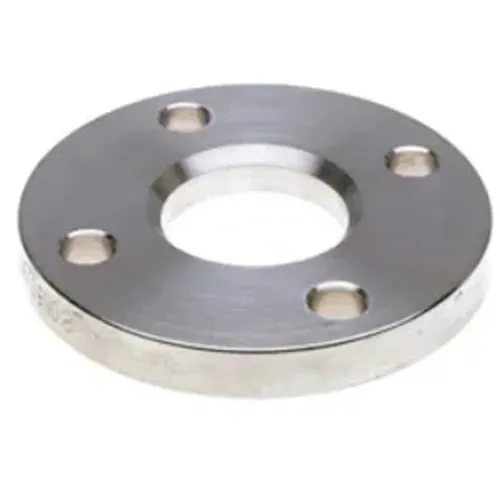-
Cangzhou Yulong Steel Co., Ltd.
-
Phone:
+86 13303177267 -
Email:
admin@ylsteelfittings.com
- English
- Arabic
- Italian
- Spanish
- Portuguese
- German
- kazakh
- Persian
- Greek
- French
- Russian
- Polish
- Thai
- Indonesian
- Vietnamese
- Zulu
- Korean
- Uzbek
- Hindi
- Serbian
- Malay
- Ukrainian
- Gujarati
- Haitian Creole
- hausa
- hawaiian
- Hebrew
- Miao
- Hungarian
- Icelandic
- igbo
- irish
- Japanese
- Javanese
- Kannada
- Khmer
- Rwandese
- Afrikaans
- Albanian
- Amharic
- Armenian
- Azerbaijani
- Basque
- Belarusian
- Bengali
- Bosnian
- Bulgarian
- Catalan
- Cebuano
- China
- China (Taiwan)
- Corsican
- Croatian
- Czech
- Danish
- Esperanto
- Estonian
- Finnish
- Frisian
- Galician
- Georgian
- Kurdish
- Kyrgyz
- Lao
- Latin
- Latvian
- Lithuanian
- Luxembourgish
- Macedonian
- Malgashi
- Malayalam
- Maltese
- Maori
- Marathi
- Mongolian
- Myanmar
- Nepali
- Norwegian
- Norwegian
- Occitan
- Pashto
- Dutch
- Punjabi
- Romanian
- Samoan
- Scottish Gaelic
- Sesotho
- Shona
- Sindhi
- Sinhala
- Slovak
- Slovenian
- Somali
- Sundanese
- Swahili
- Swedish
- Tagalog
- Tajik
- Tamil
- Tatar
- Telugu
- Turkish
- Turkmen
- Urdu
- Uighur
- Welsh
- Bantu
- Yiddish
- Yoruba

Nov . 25, 2024 03:56 Back to list
Current Trends in Galvanized Tubing Prices and Market Insights
Understanding Galvanized Tubing Prices Key Factors and Market Trends
Galvanized tubing, known for its durability and resistance to corrosion, is widely used in various applications ranging from construction to manufacturing. The prices of galvanized tubing can fluctuate due to several factors, including raw material costs, production processes, demand and supply dynamics, and industry standards. This article delves into the key elements that influence the pricing of galvanized tubing and offers an outlook on market trends.
The Composition and Production of Galvanized Tubing
Galvanized tubing is primarily made from steel that has been coated with a layer of zinc to enhance its resistance to rust and corrosion. The process of galvanization, which can be achieved through hot-dip galvanizing or electro-galvanizing, adds an extra layer of protection, allowing the tubing to withstand harsh environmental conditions. The cost of raw materials, particularly zinc and steel, plays a significant role in determining the final price of galvanized tubing. When the prices of these base materials fluctuate on the global market, it directly impacts production costs and, subsequently, retail prices.
Factors Affecting Prices
1. Raw Material Costs As previously mentioned, the prices of zinc and steel are pivotal in the pricing structure of galvanized tubing. In times of economic growth, demand for these metals may increase, driving up their prices and, in turn, affecting galvanized tubing costs. Conversely, during economic downturns, raw material prices may decrease, potentially lowering the cost of galvanized tubing.
2. Manufacturing and Labor Costs The costs associated with production—such as energy, labor, and overheads—are also critical. Countries with lower labor costs may produce galvanized tubing at more competitive prices, impacting the pricing strategies of manufacturers in regions with higher labor expenses.
galvanised tubing prices

3. Demand and Supply Dynamics The construction and manufacturing sectors are the primary consumers of galvanized tubing. Seasonal demand fluctuations, driven by factors like construction cycles and government infrastructure projects, can influence prices. Additionally, if supply exceeds demand, prices may drop, while shortages can lead to price hikes.
4. Technological Advancements Innovations in manufacturing processes can enhance productivity and reduce costs, potentially leading to lower prices for consumers. As manufacturers adopt more efficient technologies, they may be able to pass some savings onto their customers, impacting the overall market price for galvanized tubing.
5. Geopolitical Factors Global political stability can also affect the prices of galvanized tubing. Trade tariffs, sanctions, and changes in trade agreements can impact the costs of importing raw materials or finished goods. For example, tariffs imposed on steel imports can lead to higher prices domestically, influencing the cost of galvanized tubing.
Market Trends and Future Outlook
The market for galvanized tubing has shown resilience, with demand expected to grow in the coming years, particularly in developing economies focusing on infrastructure development. Sustainable practices are also on the rise, with manufacturers exploring eco-friendly alternatives in the galvanization process, which may cause shifts in pricing structures.
Forecasts suggest that as the construction industry rebounds post-pandemic, demand for galvanized products will likely increase. However, manufacturers must stay alert to the volatility in raw material prices and geopolitical developments that could disrupt supply chains.
In conclusion, galvanized tubing prices are subject to various interlinked factors, including raw material costs, manufacturing expenses, and overall market dynamics. For consumers and businesses, understanding these pricing influences can aid in budget planning and procurement strategies. With continued growth in construction and an emphasis on sustainability, the galvanized tubing market is poised for exciting developments in the years to come.
Latest news
-
ANSI 150P SS304 SO FLANGE
NewsFeb.14,2025
-
ASTM A333GR6 STEEL PIPE
NewsJan.20,2025
-
ANSI B16.5 WELDING NECK FLANGE
NewsJan.15,2026
-
ANSI B16.5 SLIP-ON FLANGE
NewsApr.19,2024
-
SABS 1123 FLANGE
NewsJan.15,2025
-
DIN86044 PLATE FLANGE
NewsApr.19,2024
-
DIN2527 BLIND FLANGE
NewsApr.12,2024
-
JIS B2311 Butt-Welding Fittings LR/SR 45°/90° /180°Seamless/Weld
NewsApr.23,2024











